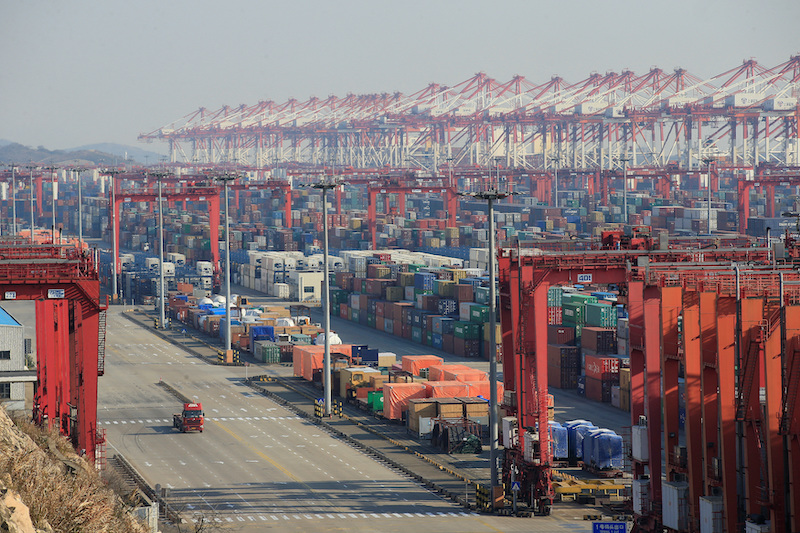China’s exports and imports extended declines in May, amid dismal demand from developed markets, with the US and Europe struggling because of rising interest rates and inflation.
The world’s second largest economy grew in the first quarter amid a surge in the services sector, but factory output has slowed severely since then and raised doubt about China’s weak recovery.
Exports slumped 7.5% year-on-year in May, data from China’s Customs Bureau showed on Wednesday, much larger than the forecast 0.4% fall and the biggest decline since January.
Imports contracted by 4.5%, slower than an expected 8.0% decline and April’s 7.9% fall.
ALSO SEE:
China ‘Likely to Cut Rates’ in Second Half, State Researcher Says
Trade worse than when Covid rocked Shanghai
“The weak exports confirm that China needs to rely on domestic demand as the global economy slows,” Zhiwei Zhang, chief economist at Pinpoint Asset Management, said.
“There is more pressure for the government to boost domestic consumption in the rest of the year, as global demand will likely weaken further in the second half.”
Highlighting the extent of the weakness, the data shows trade was worse even than when the port of Shanghai, China’s busiest, was shut down due to strict Covid curbs a year earlier.
The figures also add to a growing list of indicators that suggest China’s post-Covid economic recovery is quickly losing steam, bolstering the case for more policy stimulus.
Yuan, Asian stocks plunge
Asian stocks fell into the red after the data as did the yuan and the Australian dollar, a commodity currency that is highly sensitive to swings in Chinese demand.
China’s post-pandemic stock rally has faded as small-time investors turn bearish on equities and double down instead on safer assets amid a stuttering economic recovery.
The economy has been hit by a double whammy of faltering demand at home and abroad with the ripple effects felt across the region.
South Korean data showed shipments to China slid 20.8% in May, marking a full year of monthly declines, with Korean semiconductor exports dropping 36.2%, suggesting weak demand for components for final manufacture.
Chinese imports of semiconductors fell 15.3%, as the market for the consumer electronics exports that include such parts softened.
Demand for raw materials broadly weakened with coal imports pulling back from the 15-month high hit in March, amid soft appetite from the power and steel sectors. Copper imports slid 4.6% in May from a year ago.
Mild recessions seen in developed economies
China’s official purchasing managers’ index (PMI) released last week showed factory activity shrank faster than expected in May.
The PMI’s subindexes also showed factory output swung to contraction from expansion while new orders, including new exports, fell for a second month.
While economic growth beat expectations in the first quarter, analysts are now downgrading their forecasts for the rest of the year, as factory output slows.
The government has set a modest GDP growth target of around 5% for this year, after badly missing the 2022 goal.
“Looking forward, we think exports will fall further before bottoming out later this year,” said Julian Evans-Pritchard, head of China economics at Capital Economics.
“Although interest rates outside of China are near a peak, the lagged impact from the sharp rate hikes is set to weaken activity in developed economies later this year, triggering mild recessions in most cases.”
- Reuters with additional editing by Jim Pollard
ALSO SEE:
China Services Activity Speeds Up as Demand Recovers: Caixin
US to Target Investment in China Chips, AI, Quantum Computing
China’s Small Investors Avoiding Stocks After 20% Slump
US Funds Pull $6 Billion From China ADRs as Tensions Rise
China Reports Weak April Data, Record Youth Unemployment
























